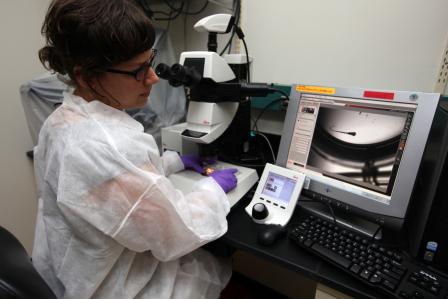Understanding Chemical Interactions with Biological Systems

EPA examines complex chemical-biological interactions to predict the potential for chemicals to impact human health and the environment. This research integrates data from the field work and laboratory experiments. Then, uses the combined data to help develop computational modeling that can be used to better understand and predict adverse human and ecological outcomes from chemical exposure.
Ecotoxicological Assessment and Monitoring
EPA researchers are developing, integrating, and evaluating ecological models that supprt an ecosystem-based framework for predicting the toxicity of chemicals to ecological systems and species. The framework helps scientist predict the effects of pesticides and other chemicals by using information about how chemicals travel, where chemicals end up in the environment, and what they do to wildlife once they get there.
Virtual Tissues and Systems Models
EPA develops models of complex biological systems to study the impact of chemicals on human development. These experimental and computational models are used to help predict what chemical-biological interactions have the potential to lead to developmental toxicity or birth defects.
Adverse Outcome Pathways
EPA researchers are collaborating with other organizations to develop, evaluate and use adverse outcome pathways (AOPs). AOPs are conceptual frameworks that assemble existing knowledge about biological events that lead to adverse health effects in human populations and ecosystems. These powerful organizational tools use available biological data and information to predict potential effects of chemicals with limited safety data.
